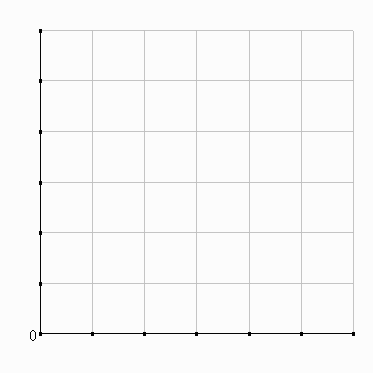|
II. Consumer demand A. The rational consumer 3. The consumer's optimum b. Geometry (cont'd.) from last time:
Food budget = $160 BLo: J = 160 - 2H Consumption point a = 40H, 80J MRS=3 |

|
|
Monday, February 11, 2013 |
|
II. Consumer demand A. The rational consumer 3. The consumer's optimum b. Geometry (cont'd.) from last time:
Food budget = $160 BLo: J = 160 - 2H Consumption point a = 40H, 80J MRS=3 |

|
At point a, MRS > Px/Py
=> relative value of X > relative cost of X
=> consume more X, less Y
? As you increase X and
decrease Y
What happens to Px/Py? remains the
same
What happens to MRS? falls
What happens to U? rises
? How would you decide where to stop?
MRS = Px/Py
Other ways to consider the value-cost comparison:
1. Since you're willing to trade $3 of junk food for $2 of health food
and be indifferent about it, you can be better off by getting more health food.
2. When you consider consuming more X and less Y, you are essentially
using good Y as a "currency" for buying good X. If you're willing to spend more
Y for another X than you have to, then do it.
If you are willing to spend less Y than you have to for X, then
stop spending so much on X.
End result:
The Tangency Condition (T.C.) for an optimum:
| Size of slope of Ind.Crv. |
º |
|MUx| |
º MRS | = |
Px |
º |
Size of slope of BL |
|
Relative value of X |
= |
Relative cost of X |
|||||
The slope of your indifference curve tells
you what you are willing to do (internal to you)
The slope of your budget line tells you what you have to do
(external to you)
Rules
to maximize your satisfaction => reach a consumer
optimum:
(1) Be on BL... (=> use all your income)
(2) where U* is tangent to BL. (=> allocate income so that
relative value =
relative cost)
If you're not doing that, you can always improve your well-being by making a consumption adjustment
--buy more if value > cost
--buy less if value < cost
c. Mathematics
(1) Generalizing to many goods
Through calculus we can demonstrate how the geometry generalizes to our world of many items to choose from.
We start by rearranging the tangency condition:
| MUx ------- MUy |
= | Px ---- Py |
=> | MUx ------- Px |
= | MUy ------ Py |
In this form we can tack on as many items as we like.
The result is...
The equi-marginal principle:
| MU1 ------- P1 |
= | MU2 ------- P2 |
= . . . = | MUn ------- Pn |
=> Allocate your income to get the same amount of extra satisfaction per $ spent on any item.
No item offers any better value per $ than any other item
Example: Utils of pleasure from your
last $ spent on...
Food: 9 / Shelter: 9 / Clothing: 12
? What should you do?
(2) Solving consumer optimization problems
Why do this?
It's artificial - U is not quantifiable in practice.
But it explicitly forces you to utilize the 2 key optimality
relationships: the tangency condition and the budget constraint.
Given U = U(X,Y), I,
Px, Py
Goal: find X and Y which maximize U
Subject to: I = PxX + PyY
2 unknowns: X and Y
2 equations:
(1) Tangency Condition (T.C.):
MRS = Px/Py, where MRS
= MUx/MUy
(2) Budget Constraint (B.C.): I = Px X + Py Y
II. Consumer demand
B. Extensions and
applications of consumer theory
Goals of section IIB
(1) interpret indifference curves and their behavior to see key demand concepts:
responses to income and price
(2) extend our notion of consumer welfare to situations of interrelated
markets
(3) apply the general equilibrium model to policy situations.
1. Changing budget constraints
Learning objectives: Diagram and explain how consumers respond to changes in income and relative prices. Draw and interpret an Income-Consumption Curve (ICCs) and Price-Consumption Curve (PCC).
Focus: How does the consumer's optimum change when
income or prices change?
We'll consider income first, then price.